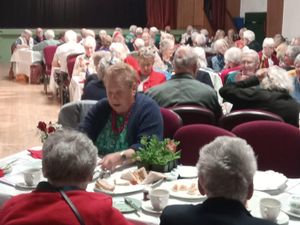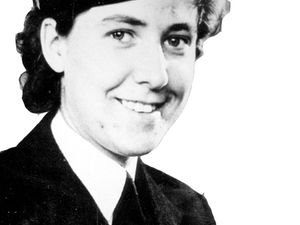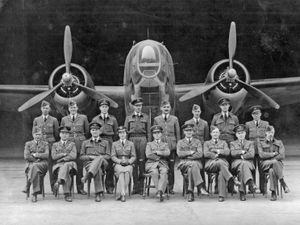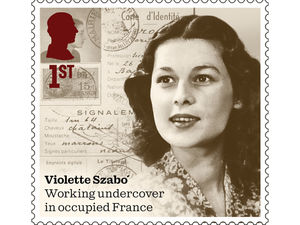Witness to rise of the Nazis dies at Shropshire home aged 100
A woman from Shropshire who was an eyewitness to history-in-the-making as Europe descended towards war in the 1930s has died at the age of 100.
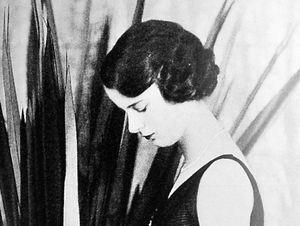
Lady Joan Dunn was one of the last living Britons to have seen Hitler in the flesh, and was in the Strangers' Gallery of the House of Commons as Prime Minister Neville Chamberlain gave a "peace in our time" message to MPs after the ill-fated Munich Agreement in 1938.
During the war she served at the top secret codebreaking centre at Bletchley Park in its early days - in recent times a researcher had interviewed her twice to tap her memories - and later with MI6.
Lady Joan, who lived in her final years at Maesbrook care home at Meole Brace, Shrewsbury, died on July 12 and there will be a Requiem Mass at Shrewsbury Cathedral on Tuesday, July 24, at 12.15pm, followed by interment at Odiham Cemetery, Hampshire, the following day.
She was born Joan Stafford King-Harman in London. The family estate was at Rockingham in County Roscommon in the Irish Republic.
Munich finishing school
In 1935 as a teenager she went to what she described as a pre-finishing school in Munich to hone her piano playing and German language skills.
The school was attended by a number of young British women from upper class families, and Joan was to spend a year in Nazi Germany.
Munich was home to the headquarters of the Nazi Party and she was to see Hitler several times, but said they all refused to give him the Fascist salute.
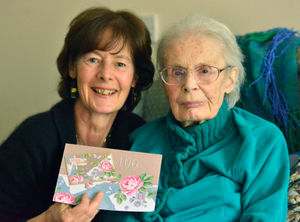
In those peaceful times with war still a distant prospect, she was impressed by the way Hitler had transformed Germany in the wake of the Great War, but also saw some troubling early signs of what was to come.
"I thought he was a wonderful man. Of course my family were all pretty furious when I got back and thought I was a silly young girl," she was to recall in an interview with the Shropshire Star shortly before her 100th birthday, which she celebrated on March 7.
Debutante
There followed three months in Paris to perfect her French and be immersed in more culture, then she returned to Britain and was a debutante, which meant "coming out," the process in which upper class girls were introduced to the high society social scene.
As the international news became worse, it was through her sister's godfather, the MP Sir Gilbert Acland-Troyte, a distant cousin, that she was able to watch proceedings in the House of Commons quite frequently, and witnessed Neville Chamberlain's statement.
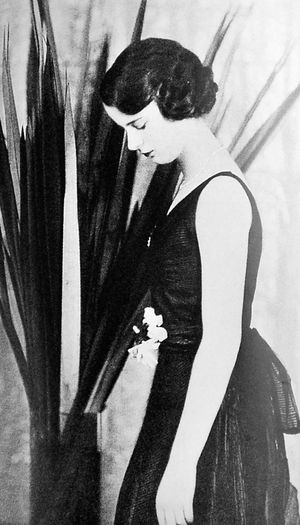
Young Joan went on a secretarial course and with the coming of war she worked for the ARP (Air Raid Precautions) and then got a letter which changed the course of her life.
"I got this letter out of the blue from 55 Broadway Buildings, asking whether I would be interested in a job in the Foreign Office.
"To cut a long story short I was interviewed and at the end they said you will do, would you like the job - it will be to do with passport control.
"They didn't say anything about what I would be doing."
Secret Intelligence Service
It was in fact nothing to do with passport control. She had been headhunted and was about to plunge into the world of secret intelligence.
Turning up on the Monday morning as instructed with her suitcase, she was initially taken to Wormwood Scrubs prison, which was being used by MI5.
She was then driven to Bletchley Park where she was told she would be a confidential secretary with languages, and the government would pay for her billeting.
"Once I got into my office, they started explaining the work. I was not on the decoding side at all - my sister went into that. I was in the Secret Intelligence Service - Naval Intelligence Department 9."
They would receive the deciphered messages coming out of the decoding huts.
Next door to Kim Philby
Later in 1940 Joan was to move from naval intelligence to MI6 in St Albans.
Joan, who was a civilian, said Kim Philby worked in the next room to her, in the Spanish section - years later Philby was revealed to have been in a KGB spy ring. She would chat to him, and said he came across as very charming.
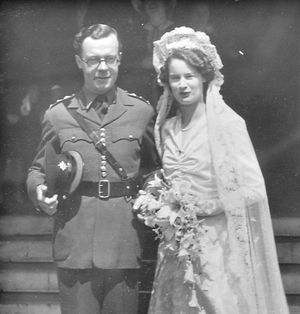
She never discussed her work with anybody, telling her parents that she was working for the Foreign Office.
Her only brother, Thomas Stafford King-Harman, who was in the Irish Guards, was killed in Normandy in 1944 at the age of 22.
Joan married Captain George Dennehy of the Irish Guards in 1943. After the war he was a solicitor in the city.
Volunteer
Joan meanwhile volunteered tirelessly, and worked as a school governor for the Oratory School and also for the Catholic Housing Aid Association. The couple loved to travel, and going to the ballet and opera in London.
When they moved to Hampshire, she continued her voluntary work at the Basingstoke hospice and running the local Meals on Wheels service.
George died in 1990 and in 1997 Joan married Sir Robin Dunn, an old family friend and retired High Court judge. They were both 79. She moved to his home near Porlock, Somerset. Sir Robin died in 2014 and Joan then came to Maesbrook Care Home.
In recognition of her service at Bletchley Park, she received a commemorative badge issued by the government to the surviving veterans as recently as 2016.
Joan had four daughters, 16 grandchildren, and over 30 great-grandchildren, and was proud to have known seven generations of her family.
"If anybody asked me the most amazing thing during the course of my life, I would say the man on the moon," she said during our interview shortly before her 100th birthday.

